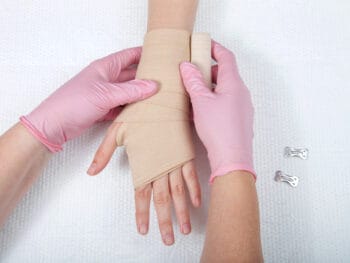
However, telemedicine has potential pitfalls. At Medcor, we’ve devoted considerable time and talent to assessing these pitfalls and navigating our way to a telemed solution for occupational health that works.
Reality of Telemedicine Today
An honest look at the telemedicine landscape today shows us that telemedicine adoption in occupational health is slower than the hype may lead us to believe. For example, contrary to some expectations, many tech-savvy Millennials prefer an in-person provider visit rather than a virtual one for their healthcare.
Also, just like other medical delivery models, telemedicine can be subject to misuse as well as inconsistent results and service levels. There isn’t yet enough published data to quantify results and quality. Overprescribing, unnecessary treatments, delayed return to work, conflict around OSHA recordables, causation, denied claims, creeping catastrophic claims, opioid addiction, and litigation are problems that do not go away just because the provider is accessed by video instead of in person!
Click Link to Access Free PDF Download
“13 Research Studies to Prove Value of Return-to-Work Program & Gain Stakeholder Buy-In”
Challenges for Occupational Health and Telemedicine
Recognizing the challenges is key to overcoming them.
Technology. Using telemedicine to treat work-related injuries can present layers of technological complications at the workplace. Internet access is needed, which means that appropriate bandwidth must be available, firewalls have been anticipated and won’t be a hindrance, and patients can access the facility’s wifi. Hardware for the virtual visit is also a consideration: Can patients use their own personal smartphones, or do they need access to an employer desk top? Tech support is another challenge: Who will help patients troubleshoot any difficulties?
In terms of technology, there are also challenges of system infrastructure: Do virtual visits need to be scheduled? Does the system rely on callbacks? How are medical records, reports, billing, data security, and patient privacy handled?
Scope. First aid cases don’t need a provider, either in person or through tele medicine. Life threats and emergencies require in-person care without delay. Furthermore, telemedicine cannot meet clinical needs when hands-on assessments and treatments are required, such as imaging, labs, palpations, sutures, splints, irrigation of eyes, etc.
Yet many cases are appropriate for telemedicine – identifying which of these cases are eligible for care through telemedicine is another challenge.
Coverage. To offer promised convenience and access, a telemedicine system must have many providers avail able to respond to calls. In small-scale systems, a few in-house or select providers handle the coverage – but they may be spread thin and have other duties and patients. Wait times increase and service is limited after hours (e.g., nights and weekends). When alternate coverage is used, results are inconsistent. In large-scale programs, multiple providers are needed across multiple states. Multi-licensed providers are the go-to solution, but when one of those providers is in a session with a patient (or not on duty), patients in multiple states are affected.
Coverage challenges also include having providers who understand the ins and outs of occupational health and work-related injuries as well as having providers who are skilled at conducting virtual patient encounters.
User Experience. Users are affected by the challenge of technology, scope, and coverage. They also often have unrealistic expectations. User proficiencies differ, too, as do their education level, technical experience, age, personality, and willingness to try. Moreover, people who are using telemedicine are patients – they are either sick or injured. These are moments when people are not at their best. The stress they may feel from their health concern can influence their experience of telemedicine. The most common technical support issue in telemedicine is caused by people who, in the stress of the moment, have forgotten the password on their smart phones and therefore can’t access the telemedicine system.
FREE DOWNLOAD: “13 Research Studies to Prove Value of Return-to-Work Program & Gain Stakeholder Buy-In”
User experience can also be influenced by how users feel throughout the process. Patients can feel alone or even overwhelmed at different stages. The level of assistance users need varies just as their proficiencies and expectations vary.
Solutions Moving Forward
For telemedicine to deliver beneficial outcomes for employers and patients, we’ve found an accurate assessment needs to be made first regarding the needs of the organization and its potential telemedicine users. This enables selecting the right system and setting expectations realistically and honestly, knowing that telemedicine is not a magic solution for all work-related injuries. Telemedicine will yield the best outcomes only when its use is clinically appropriate for the health concern in question. The use of telemedicine, therefore, needs to include a system to determine appropriateness on a case by-case basis.
We’re working to ensure our telemedicine adopts the best practices that have been established in our other lines of business, namely evidence-based medicine, and attentive customer service so that telemedicine is an all-around successful endeavor. By emphasizing clinical outcomes and user experience telemedicine challenges can be surmounted.

Author Curtis H. Smith, Executive Vice President, joined Medcor in 1995. He helped develop Medcor’s injury triage system and holds several US and foreign patents on injury assessments methods. Smith has taught and practiced in EMS as paramedic and dispatcher. He currently supports Medcor’s business development and marketing teams. http://medcor.com. Contact: csmith@medcor.com
















